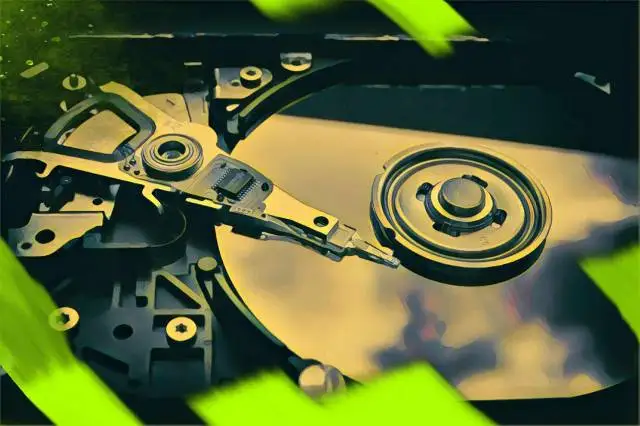If you’ve ever poked around in your DAW settings and stood aghast at the array of sample rates on offer, you’re not alone. Some major DAWS (Logic Pro and Pro Tools, for example) offer six sample rates to choose from; 44.1, 48, 88.2, 96, 176.4, and 192.
In case you’re not familiar, the sampling rate is the resolution at which audio is recorded and, in the case of virtual instruments, produced. Given this, you’d think that bigger was better, right?
Not necessarily.
While most of the discussions about sample rates are centered around the limits of human hearing, there are some other factors to take into consideration when choosing what sample rate to record at.
And that's where we come in. This article is going to be taking a deep (and I mean, deep) dive into the zeros and ones of digital audio. Complex? In places, yes. But by the end of this article you'll know the pros and cons of recording at 48kHz vs 96kHz, and be able to decide which one is best for you.
Understanding Sample Rates
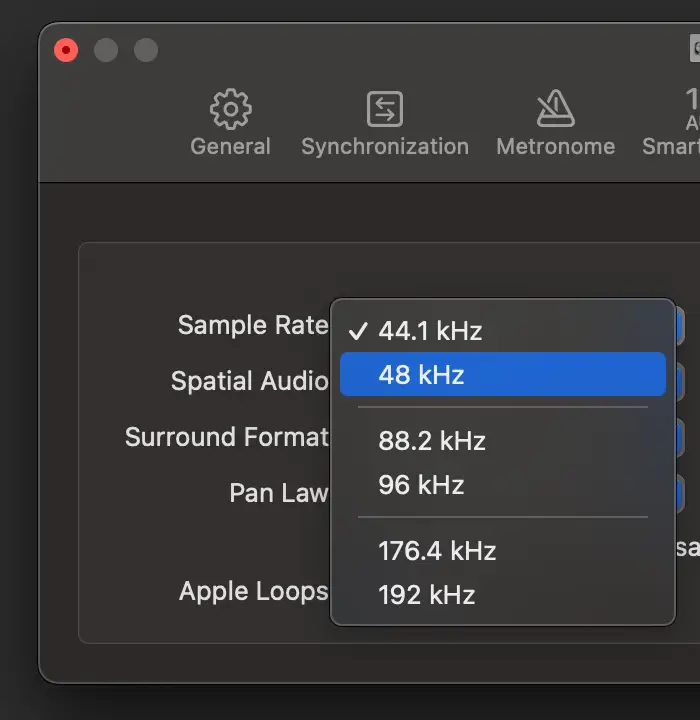
Imagine there's a car moving past your house. It travels from left to right, and past your neighbor's house in one continuous movement. That's the equivalent of sound in the analog world - the waveform is a continuous sound.
Now say you want to replicate that car moving. You decide to make a flip-book animation of the vehicle traveling from left to right. The more pictures you make of that car moving, the more detailed and smooth the motion looks.
That's how digital audio works; it takes a series of pictures (or samples) of the analog waveform at super-fast speeds, in order to replicate it in the digital world.
Sample rates refer to how frequently those snapshots are taken each second; a sample rate of 44.1 kHz means that there's 44,100 samples of the incoming waveform being taken each second. Higher sample rates result in more snapshots being captured. But can we hear that extra detail?
Nyquist Theorem
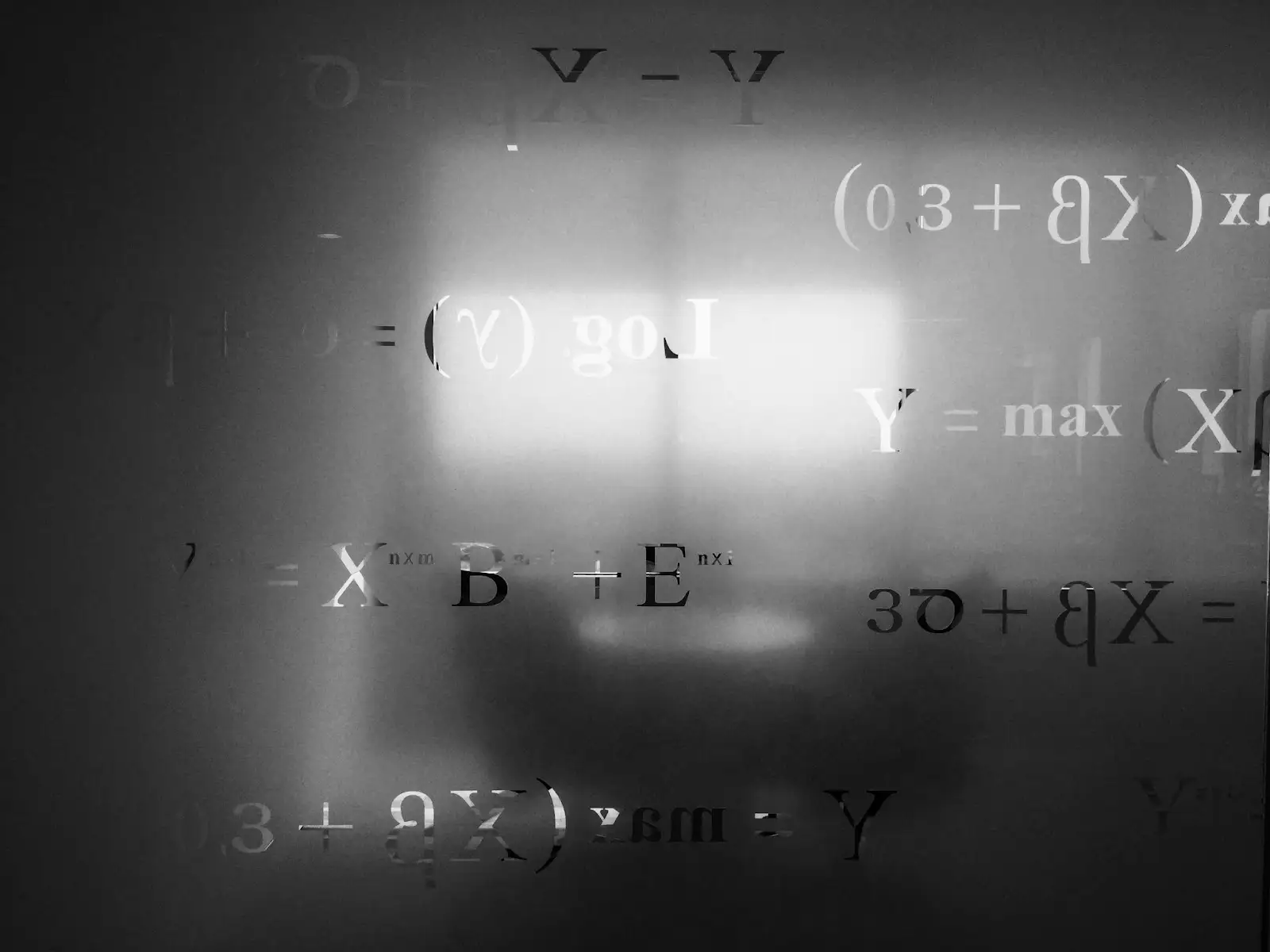
A smart young fella named Harry Nyquist discovered that the sample rate needs to be at least twice the highest frequency being recorded. This is known as the Nyquist frequency, or Nyquist limit.
Since humans can hear a maximum frequency of around 20 kHz, a minimum sampling rate of 40 kHz is required to capture all audible frequencies.
Trying to record frequencies above this limit leads to aliasing, or foldover. The higher frequencies are misrepresented as lower frequencies, leading to distortion or artifacts in the reconstructed signal.
Every modern digital-analog converter has anti-aliasing filters to remove any artifacts, essentially acting as a low pass filter to remove any high frequencies that may alias. Recording at higher sample rates allows headroom for these filters to operate without cutting off any audible frequencies.
Put in simple terms, the Nyquist theorem is a 'how much is enough' rule for digital recording.
The Emergence of CD Quality Audio
The CD quality standard of 44.1 kHz came about in the early days of digital audio, when hard drives weren't up to the job of storing an album's worth of material and video recorders were re-purposed for the job.
Based on the frame rate and useable lines per frame, the pencil-heads used to store 3 audio samples per frame, resulting in a sample rate of 44.1 kHz. This was the minimum possible sample rate that conformed to Nyquist theory and allowed for the master to be stored on videotape. It became what we now refer to as CD quality audio.
Fourier Transform
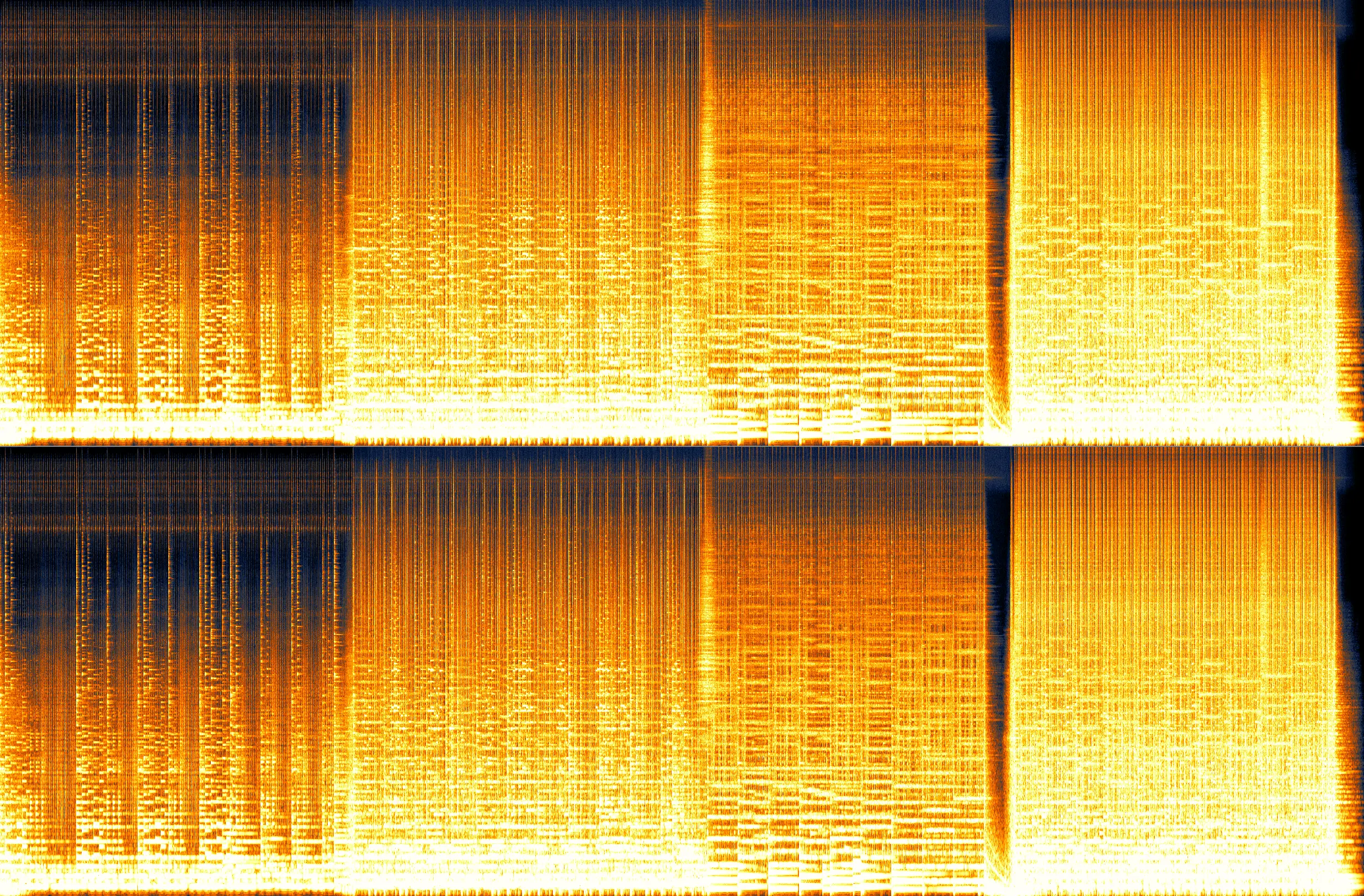
Sample rates don't just affect how a signal is captured; they also affect how digital audio is 'read'.
Fourier transform is a mathematical tool used to analyze a complex signal and break it down into simple waveforms at different frequencies. It's how plugins like EQs , spectrograms , and pitch detection work, analyzing the whole signal and breaking it down into smaller bands.
All this to say, the more information an audio file has in terms of snapshots per second (higher sample rates) the more accurate the fourier transform calculations will be.
Frequency Response

Another factor to consider when discussing sample rates is the gear you're recording and monitoring on.
Every piece of audio gubbins has a frequency response, which can loosely be described as:
- What frequencies it can reproduce, and
- how accurately it does so.
If you use a crappy Radioshack microphone to lay down a take on a crappy guitar, and play it back on a pair of crappy Radioshack speakers, chances are it's not going to sound good. No matter what sampling rate you use.
Take Me Higher
After barging through all this science-y stuff, we can see that higher sample rates allow us to capture higher frequencies, and analyze them in greater detail.
But while recording at 96 kHz means we can capture frequencies up to 48kHz, from a human listening perspective there's no real audible difference to a 44.1 kHz recording. Even for those folks with exceptional hearing, the upper frequencies will still be out of audible range.
And thanks to Nyquist theory, we know that 44.1 kHz is more than ample to reproduce any signal within the human hearing range perfectly.
So why do we use higher sample rates?
48kHz: The Industry Standard

When it comes to film, TV, and streaming, 48kHz has become the widely accepted sample rate for delivery. While higher sample rates are available, 48 kHz has secured its place as the standard within the media industry thanks to its balance of quality, efficiency, and compatibility.
Why is 48 kHz the Go-To?
The principal reason for adopting a 48 kHz sample rate as a standard in media production was due to compatibility. The sample rate played nicely with the different frame-based video systems that European and NTSC television use, and at the same time fulfilled the Nyquist frequency requirements.
Nowadays, streaming platforms like Netflix, Disney, and Amazon require audio to be delivered at 48 kHz, and even if you're scoring an old-school actual film for theatrical release, you'll be required to deliver 48 kHz stems for the mixing stage.
Benefits of Using a 48kHz Sample Rate
Another reason 48 kHz has become a widely accepted sample rate is its balance between great sound and processing demands.
Anti-Aliasing
The slightly higher sample frequency allows for more headroom for anti aliasing filters to operate within. At sampling rates of 44.1 kHz, a less-than-perfect anti aliasing filter can introduce subtle but measurable artifacts.
On the other hand, when using sampling rates of 48 kHz, any aliasing that occurs will be out of the audible spectrum.
Resampling
Given the widespread usage of the higher sample rate in the media industry, delivering audio at 48 kHz minimizes the need for resampling. While 44.1 kHz is common practice in the music industry, if you're working in sync licensing the finished product will need to be delivered at 48 kHz.
The sample rate conversion process when upsampling from lower sample rates to 48 kHz can lead to the introduction of unwanted artifacts in the file. Therefore it's always a good idea to record at a higher quality sample rate and downsample later if necessary, for example when printing to CD.
File Size
Recording and processing audio at 48 kHz keeps file sizes manageable, which is essential for large TV and film projects where storage costs and data transfer times are an important factor.
Limitations of Using a 48 kHz Sample Rate
There are really very few limitations to using 48 kHz. While there is some debate within the audio community about whether it is truly 'good enough' for all professional applications, the difference between 48 kHz and a higher sample rate are often only noticeable in very controlled, high end listening environments.
96 kHz: High Resolution Audio
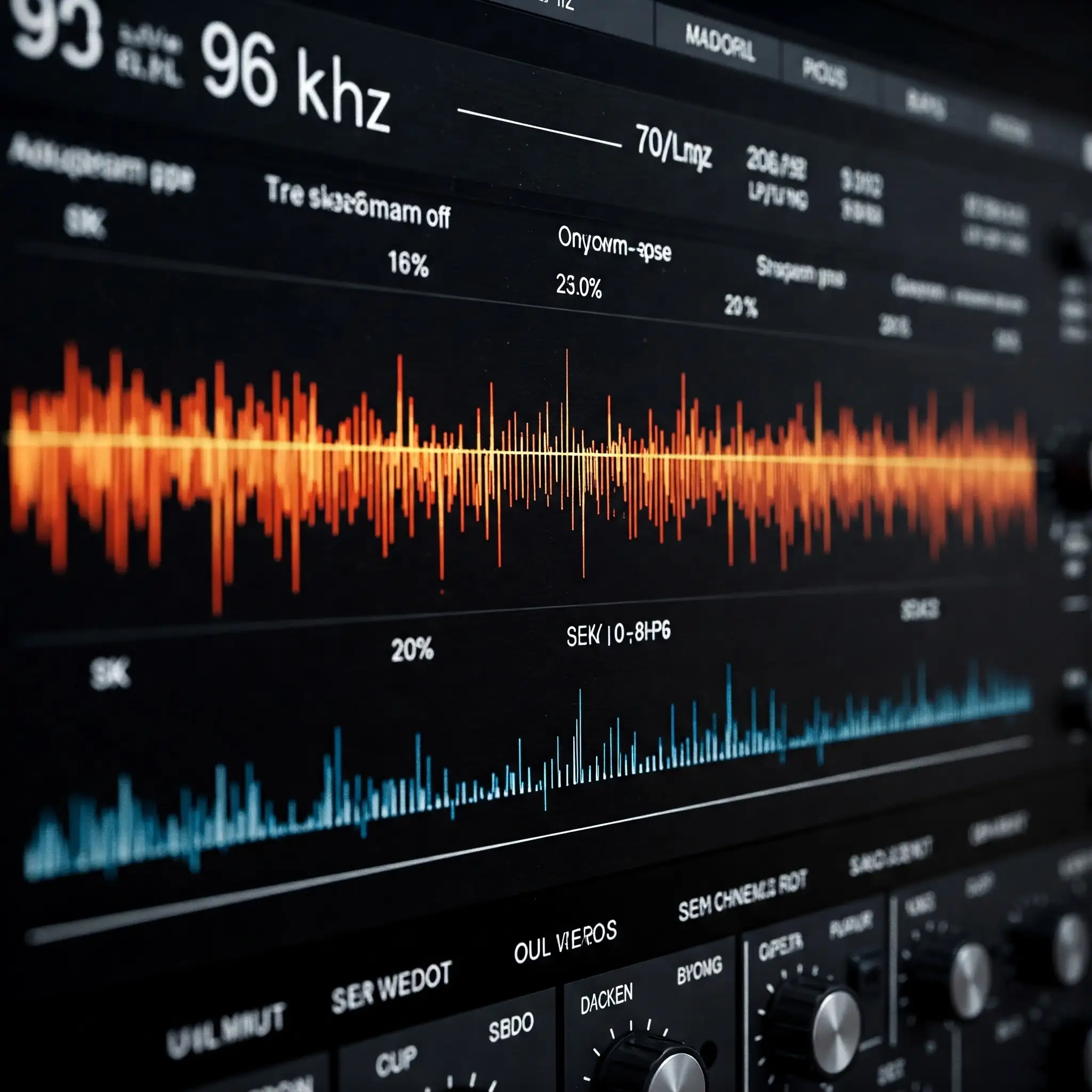
While a 48 kHz sample rate is the industry standard for film, TV, podcasts, and the like, some engineers prefer to work at 96 kHz. The theoretical benefits include more headroom for capturing high frequency content, reduced aliasing, and improved processing capabilities.
Theoretical Advantages
Extended Recording Range
A sample rate of 96 kHz allows recording of frequencies up to 48 kHz. While this is well beyond the range of human hearing (which typically tops out around 20 kHz), some folks argue that this ultra-high frequency content interacts with the sound in subtle ways that humans can still hear.
Reduced Aliasing
Remember the Nyquist limit? Recording at 96 kHz pushes that limit all the way up to 48 kHz, thus reducing the chances of aliasing artifacts interfering with any audible sound.
Better Plugin Processing
High sample rates can also result in better processing for some effects. This is particularly noticeable when time-stretching audio, or performing pitch-shifting duties.
Time-stretching audio recorded at higher sample rates results in a cleaner sound, with a more natural-sounding quality. This is why many sound designers work at an even higher sample rate (192kHz).
The same applies for processing like saturation and distortion . These plugins add additional high frequency content above the original Nyquist limit, so a 96 kHz sample rate will result in less opportunity for aliasing to occur post-effect.
More Accurate Sample Peak Measurement
Another benefit of working at 96 kHz is the improved accuracy of sample peak measurement. Often the peak of a signal occurs between the samples that have been recorded - known as intersample peaks . A mixing engineer will get a more accurate representation of where the signal peaks lie with a higher sample rate that contains more samples per second.
Future-Proofing Audio Quality
Another perceived benefit of recording at 96 kHz is to stay ahead of the game. As technology continues to evolve, higher sample rates may become the norm, and some engineers choose 96 kHz to ensure compatibility with future high-resolution formats.
Downsides of Using a 96 kHz Sample Rate
Recording at 96 kHz has lots of theoretical advantages, and can result in better quality audio when time-stretching and performing editing tasks. But these benefits come with practical trade-offs compared to using a lower sample rate.
File Size
Every time you double a sample rate, the amount of data you generate also doubles. A session recorded at 96 kHz will take up twice as much space as a 48 kHz session due to the much larger files being created.
For complex projects, this can quickly balloon the storage requirements and make backups, sharing, and file management more challenging.
Processing Power
As you'd expect, a higher sample rate demands more juice from your CPU. Unless you have a super-jazzed up machine, you may find that your session suffers from increased latency, slower rendering times, and system instability.
DAW Performance
While most DAWs support higher sample rates, running a session at 96 kHz or higher means the DAW has to work harder to stream audio. Depending on your system, and the complexity of the session, there's an increased risk of dropouts or glitches. Not ideal when you're mixing your next banger.
Plugin Performance
Some plugins internally oversample the incoming signal to improve the quality of the resulting output, for instance metering plugins or limiters. Running them at an already-high sample rate can impair CPU performance.
Workflow Efficiency
While higher sample rates may offer theoretical advantages and future-proofing, running a session at a higher rate could slow down your workflow without any noticeable advantages.
- Some budget audio interfaces can't handle 96 kHz sample rates, which can lead to distortion in the sound.
- You'll nearly always have to downsample to create final deliverables, creating unnecessary conversion steps along the way.
- If your system struggles running a session at a higher sample rate, things will inevitably take longer. Mixing will become tedious, and you'll still have to downsample afterwards.
Can We Hear the Difference Between 48 kHz and 96 kHz?
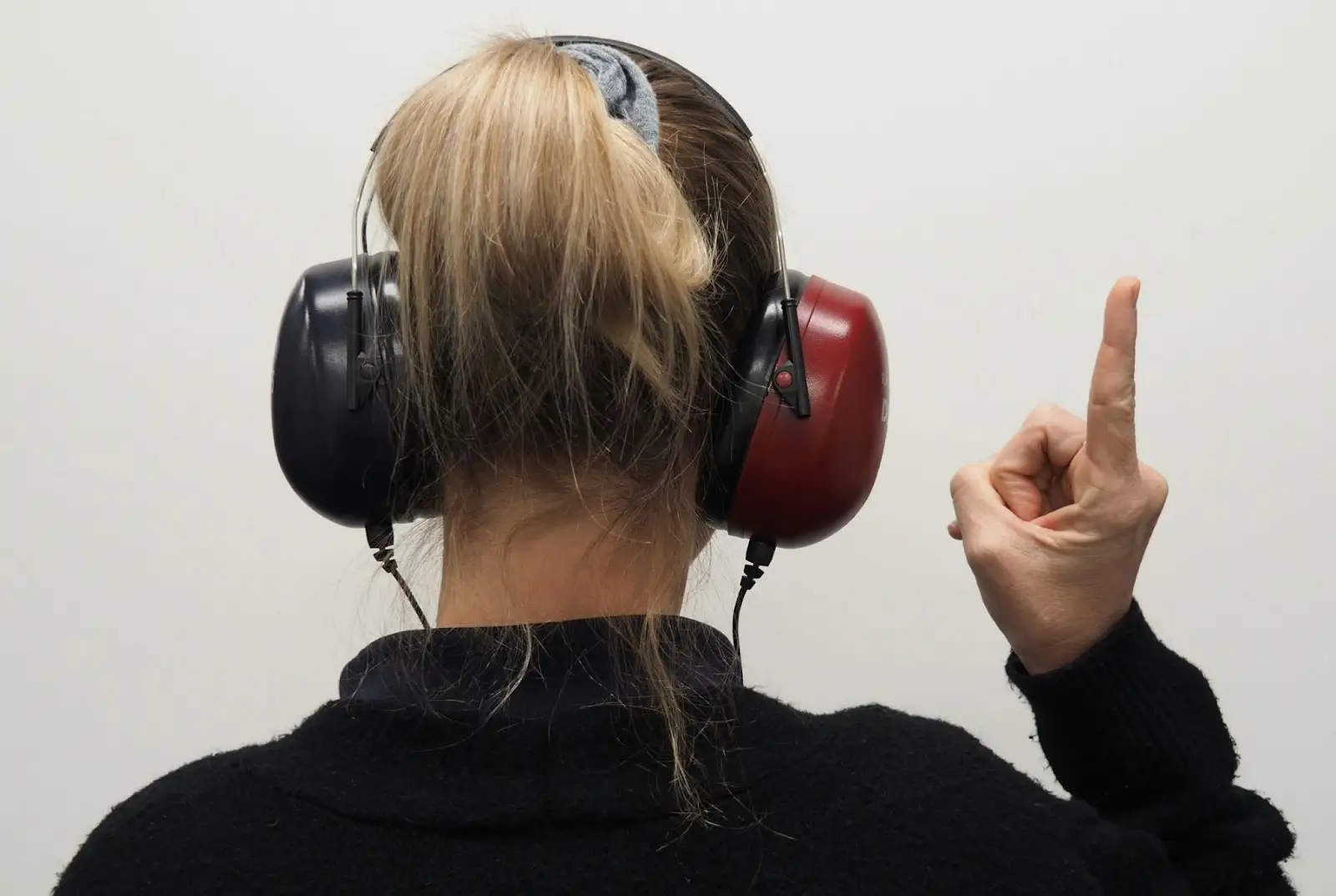
The million dollar question in this discussion is: can people actually hear the difference between 48 kHz and 96 kHz?
Depends who you ask.
Some trained listeners, notably mastering engineers and audiophiles, claim to be able to hear subtle differences between sample rates, particularly if it's an instrument they are highly attuned to.
Some people make the point that even if we can't hear the difference between the two sample rates, the existence of ultra-sonic content within the sound could have an impact on the listening experience due to harmonic interaction.
Whether this is due to actual sonic differences, or just a psychological bias is up for debate. But a couple of things affect how we hear sound.
Playback Systems
Remember the discussion about frequency response? Even if you have super human hearing, well beyond the 20 kHz range, if the speakers you're listening on don't support these ultrasonic frequencies the higher sample rate is rendered effectively useless.
Human Hearing Limitations
Most adults experience degradation in the upper ranges of their hearing as they age. Even if the ultra-high frequencies are present in a sound, there's a good chance many listeners wouldn't be able to hear them anyway.
Practical Considerations
We can boil this discussion down to two ideas:
- 48 kHz is the media industry standard, and ticks all the sonic boxes.
- 96 kHz seems kinda cool, but also comes with a lot of baggage.
Choosing the right sample rate for your project depends on your specific needs and workflow. Here's a practical breakdown for different fields of audio production.
Music Production: Recording, Mixing & Mastering
When you're working on music alone, the choice of sample rate comes down to balancing audio quality with system efficiency.
- Recording : Some engineers like to track at high sample rates of 96 kHz or above to capture every sonic detail, and to prevent aliasing errors. For most music however, 48 kHz is more than sufficient, and is less of a strain on system capabilities and storage. Plus, it negates the need for using a master clock to keep everything in sync.
- Mixing & Mastering : Many plugins nowadays provide internal oversampling to provide a more accurate output, so working at 48 kHz still provides a high standard of audio.
- Final Delivery : Streaming platforms tend to accept files with a sample rate of either 44.1 or 48 kHz. If the music is going to be reproduced on CD, the final mix will need sample rate conversion down to 44.1 kHz. Either way, recording at high sample rates is overkill in these situations.
Film & TV Audio
When working in film and television (including sync licensing ), 48 kHz is the gold standard. In most cases, the bit depth resolution will need to be 16 bits, although it's a good idea to record at a bit depth of 24 to begin with and dither down for delivery.
Given the high track counts present in post-production sessions, recording at 96 kHz could present problems with system efficiency and storage space.
Gaming & VR
Audio in gaming and virtual reality scenarios often calls for higher sample rates due to the unique demands of the format.
Extensive time-stretching and pitch shifting of sounds is often required, so it's better to record at 96 kHz.
Live Sound & Streaming
In live situations, real-time performance is top-priority, making 48 kHz the best choice.
Final Recommendations
As a general rule of thumb, the most efficient and effective way to record audio is at a bit depth of 24 and a sample rate of 48 kHz.
These settings are a sweet spot between sonic clarity, and efficiency in storage and CPU performance.
Many plugins already perform internal oversampling while working at these rates, meaning the benefits of recording at 96 kHz are negligible.
In addition, high-quality digital limiters and meters compensate for inter-sample peaks , reducing the need for higher sample rates.
Finally, 48 kHz is an industry standard for most professional work, which ensures seamless integration with collaborators and distributors.
The few situations where it may be worth considering using 96 kHz to record are when:
- a project requires extensive time-stretching, pitch shifting or editing (such as granular synthesis).
- a project is for archival purposes, and you want to future-proof the work.
Conclusion
We've covered a lot of ground! Here's a quick recap of what's been covered. The cliff notes, if you will:
- A sample rate of 44.1 kHz is capable of perfectly reproducing audio signals up to the highest frequencies within the range of human hearing.
- The TV, film, and media industry use 48 kHz as standard.
- Recording at 96 kHz requires more processing power, and more disk space to store the resulting larger files.
- Using increasingly higher sample rates result in diminishing returns in relation to system efficiency and storage costs.
- If you know you'll be using time-stretching and other editing functions on your audio, record at 96 kHz for better results.
Remember, the context you're working in is more important than chasing numbers.
If you're an artist, your audience may not care that you produced a track at 96 kHz. In fact, it's unlikely they'd hear the difference between that and something captured at 44.1 kHz.
If you're recording music for film and TV, 48 kHz is the perfect balance between sound quality and professional standards.
And if you're building a library of sounds for an effects library, 96 kHz is the way to go to allow for maximum editing capabilities.
Ultimately, it's your call. Experiment with different sample rates and see what sounds good to you. If you hear a noticeable difference at 96 kHz, go for it! (But maybe buy a bigger hard drive...).
No matter which you end up using, go forth and maketh the music!


